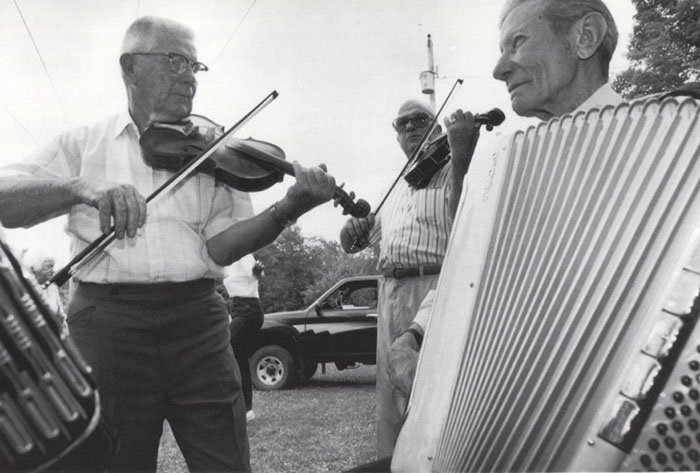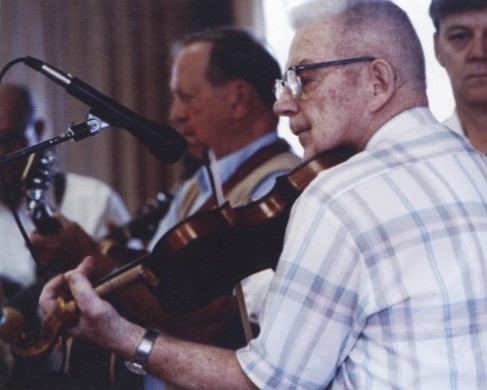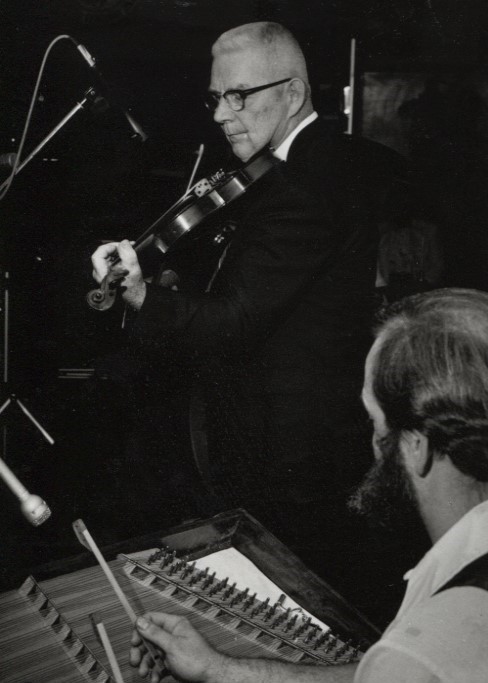Art Form: Fiddling
Location(s): Hastings (Barry County)
Les Raber

Les Raber, left, and Art Moilanen share tunes at the music jamboree in Aura

Les Raber; photo by Al Kamuda

Les Raber playing on stage
Leslie "Les" Raber (1911-1999) grew up in Allegan County, in a family of traditional musicians. His grandfather, a fiddler, and grandmother, an organist, were well-known and active dance musicians. Les's father was also a musician, as were all his siblings, but Les was the only one in the family who followed his grandfather's footsteps and mastered the fiddle. Les's mother encouraged his fiddle career by fashioning makeshift instruments from a corn stalk and cigar box, and finally bought him a violin from Sears Roebuck when he was 10 years old. By age 15 Les was playing for hall dance parties, performing a repertoire he learned at house parties from his grandfather and other local musicians. These older quadrilles, waltzes, jigs, reels, schottisches, and two-steps remained an integral part of Les's repertoire, preserving a fiddle style common to rural Michigan before the world wars and the introduction of Appalachia styles: rhythmic and straightforward, emphasizing clear communication of dance melody rather than fancy bowing and ornamentation.
Les remained an active musician throughout his adult life and played for dances in local Granges and lodge halls in southwestern Michigan. For 19 years he had a dance band with longtime friend and fellow fiddler Varsal Fales. For Les, who worked a poor farm in hard times, the band revenue often put food on the table. Over the years, Les adapted to changes in the local dance and music traditions by continuing to expand his repertoire and learning to play drums for the modern dance bands popular in lakeside pavilions after World War I. Even through this period of great change, however, when foxtrots largely eclipsed the older square dances, Les maintained the earlier repertoire of fiddle tunes. He was one of the few traditional performers of dances once common in Michigan communities, such as "Docey Balinette," "The Basket Dance," "The Irish Trot," and "Sally Waters."
Les continued to perform at jamborees, wedding anniversaries, senior citizens events, and festivals until his death in 1999. In 1987 he was part of the Michigan program at the Smithsonian Festival of American Folklife. Les's daughter Judy still performs his repertoire and carries forward his musical legacy.





